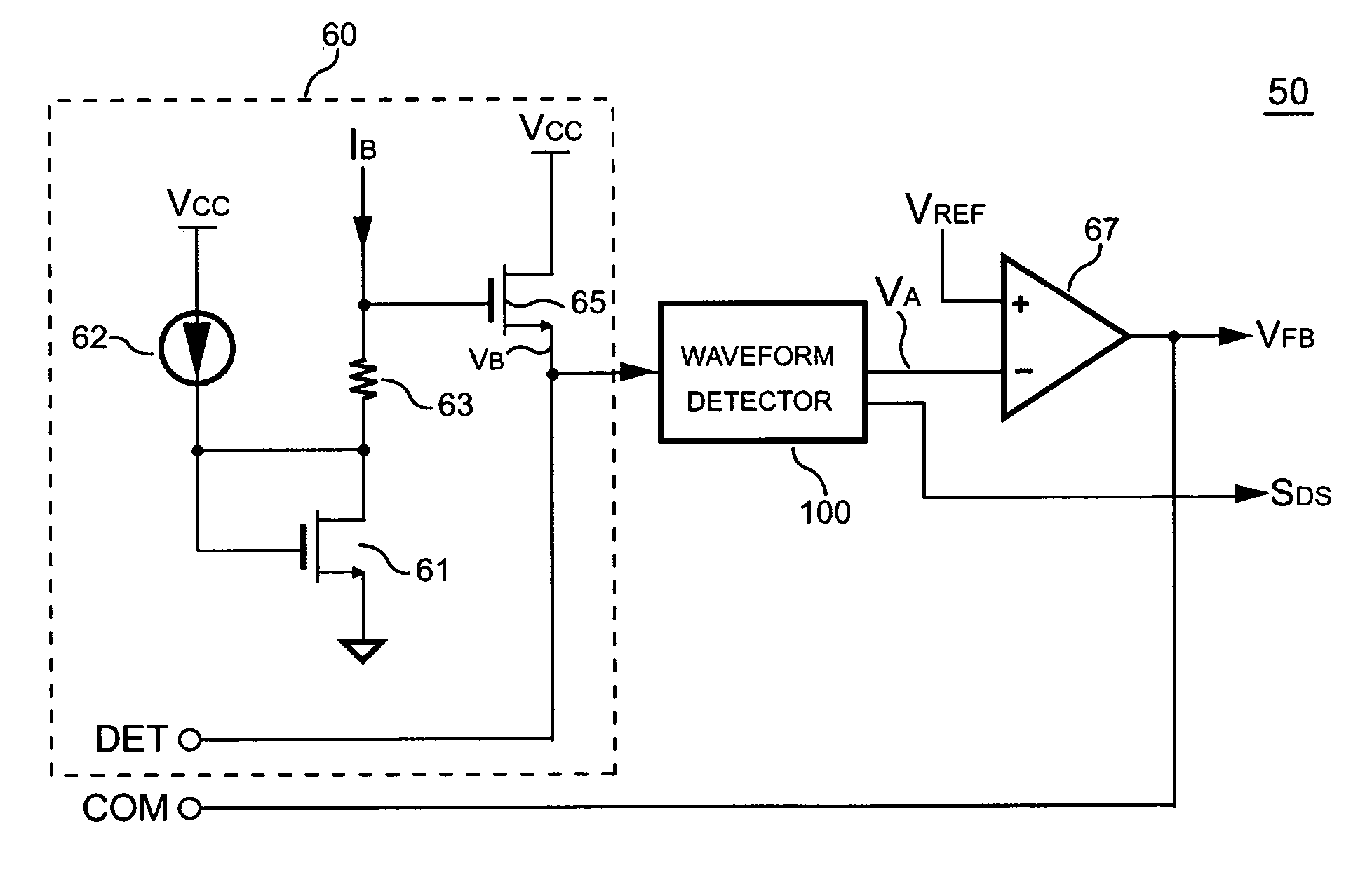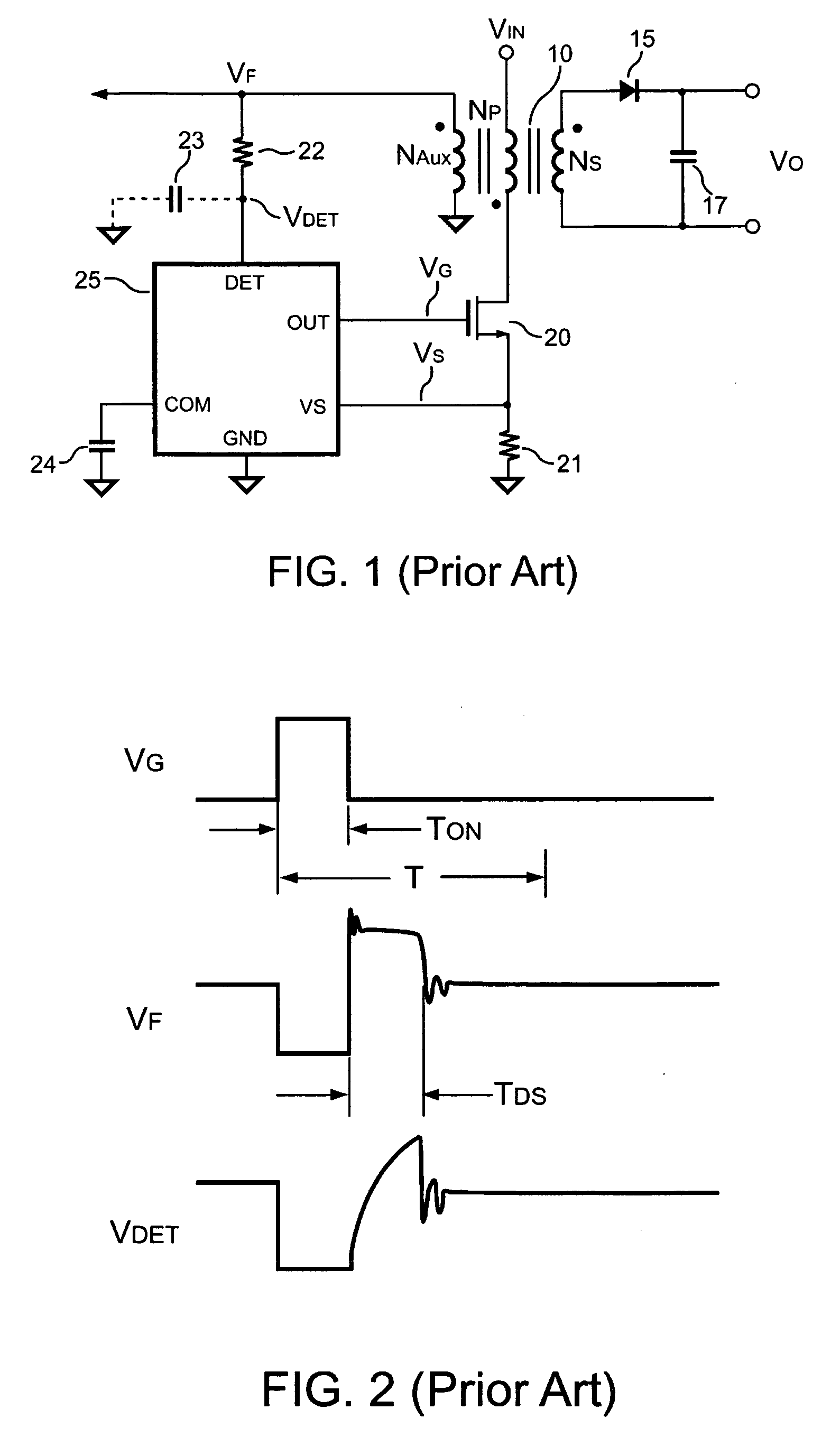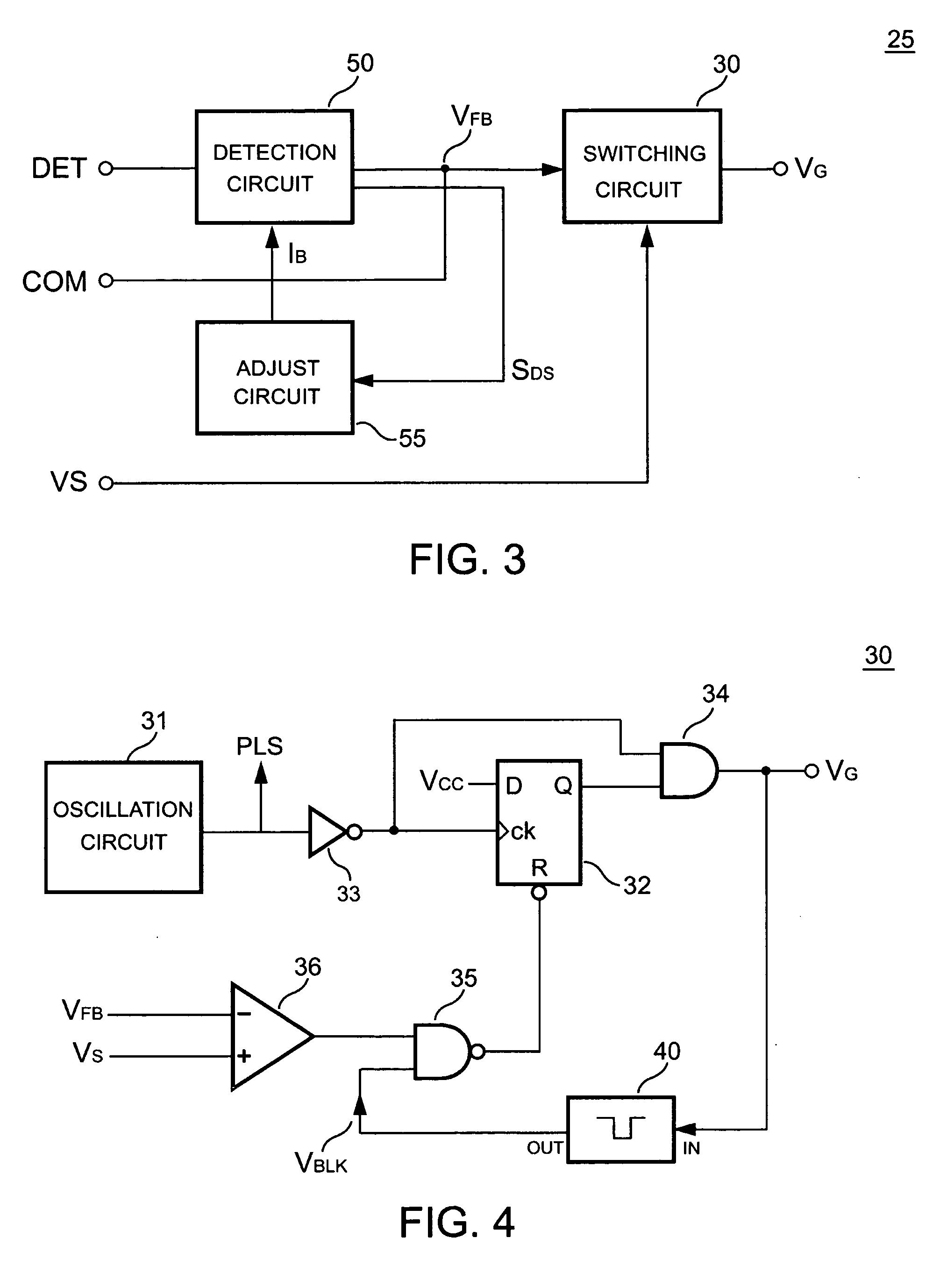Control circuit including adaptive bias for transformer voltage detection of a power converter
a control circuit and transformer technology, applied in the field of power converters, can solve the problems of inability to accurately measure the flyback voltage and light load condition, and achieve the effect of facilitating the detection of flyback voltage and preventing waveform distortion
- Summary
- Abstract
- Description
- Claims
- Application Information
AI Technical Summary
Benefits of technology
Problems solved by technology
Method used
Image
Examples
Embodiment Construction
[0019] The control circuit of the power converter comprises the switch 20 and the controller 25. The controller 25 generates a control signal VG to control the switch 20 for switching the transformer 10. FIG. 3 shows a block diagram of the controller 25 according to one embodiment of the present invention. The controller 25 includes a switching circuit 30, a detection circuit 50 and an adjust circuit 55. The detection circuit 50 is coupled to the transformer 10 to detect the flyback voltage VF of the transformer 10 through the voltage-detection terminal DET for generating a first signal VFB and a second signal SDS in accordance with the flyback voltage VF. The first signal VFB is correlated to the output voltage VO of the power converter. The second signal SDS represents the discharge time TDS of the transformer 10. The first signal VFB is transmitted to the compensation terminal COM. The switching circuit 30 generates a control signal VG to control the switch 20 and regulate the ou...
PUM
 Login to View More
Login to View More Abstract
Description
Claims
Application Information
 Login to View More
Login to View More - R&D
- Intellectual Property
- Life Sciences
- Materials
- Tech Scout
- Unparalleled Data Quality
- Higher Quality Content
- 60% Fewer Hallucinations
Browse by: Latest US Patents, China's latest patents, Technical Efficacy Thesaurus, Application Domain, Technology Topic, Popular Technical Reports.
© 2025 PatSnap. All rights reserved.Legal|Privacy policy|Modern Slavery Act Transparency Statement|Sitemap|About US| Contact US: help@patsnap.com



